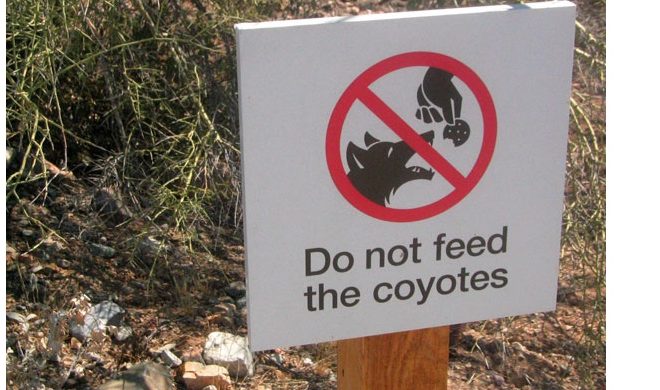Since people moved into Texas Hill Country coyote lands, coyotes and humans have been at odds. Though many fear and revile these wild canines, their reputation may not be deserved. To a coyote, a wild rabbit and a pet both look like dinner. Learning more about Texas Hill Country coyotes can help you to better appreciate these wild animals.
Nature
Texas Hill Country Coyotes Can Infiltrate Urban Areas
Identifying Coyotes

Photo: Wikimedia Commons
Coyotes often can be confused for dogs or even wolves. If you cannot tell if you are looking at Texas Hill Country coyotes or wolves, know that wolves rarely occur in Texas now, and coyotes have moved into many former wolf habitats. Coyotes tend to look most like domestic dogs since they are roughly the same size as large dogs. Compared to dogs, coyotes tend to have longer snouts and skinnier legs. When viewed from a distance, the biggest tell is the tail. Wolves and dogs carry their tails upright when walking, and foxes, which tend to be smaller members of the canine family walk with their bushy tails held in a horizontal line with their bodies. Coyotes, however, walk with their tails down, but unlike dogs, when this might be a sign of submission, this actually is just a trait of coyotes and does not reflect their moods.
Where Coyotes Roam

Photo: Wikimedia Commons
Coyotes have proven exceptionally adaptable. Unlike other animal species that retreat when their habitats are taken over, coyotes simply change their lives to live in the new areas. You can find coyotes in both rural and urban areas, and in many cases, severe weather events such as floods or droughts can drive coyotes into the cities in search of food and water. Know what to look for and how to protect your pets if you ever see Texas Hill Country coyotes in your area.
Texas Hill Country Coyotes in Urban Areas

Photo: Wikimedia Commons
Coyotes in urban areas have been known to eat family pets. Though the coyotes may feel like intruders into urban neighborhoods, it’s actually humans that have moved into the coyotes’ historic habitat. Removing the coyotes from the area just would not work because they tend to only come out at night and would just return if taken away. The best way to avoid problems is to take a prevention approach.
Preventing Coyote Problems

Photo: Wikimedia Commons
To protect yourself and your pets from roaming coyotes, you need to take some precautions. Never leave food out overnight for your pets, for stray cats, or for wildlife. This could attract hungry coyotes. Also, clean up any fruit that may have fallen off fruit trees in your yard. Since coyotes, like dogs, are omnivorous, they will eat both meat and produce. Also, do not allow small pets to roam after dark. Vets typically do not encourage indoor/outdoor cats, anyway because there are too many dangers outside that could be avoided by having the cat live indoors. Small dogs should be supervised when going out into the backyard, and you should repair any holes or openings in your fences to keep wildlife out and your pets in.



